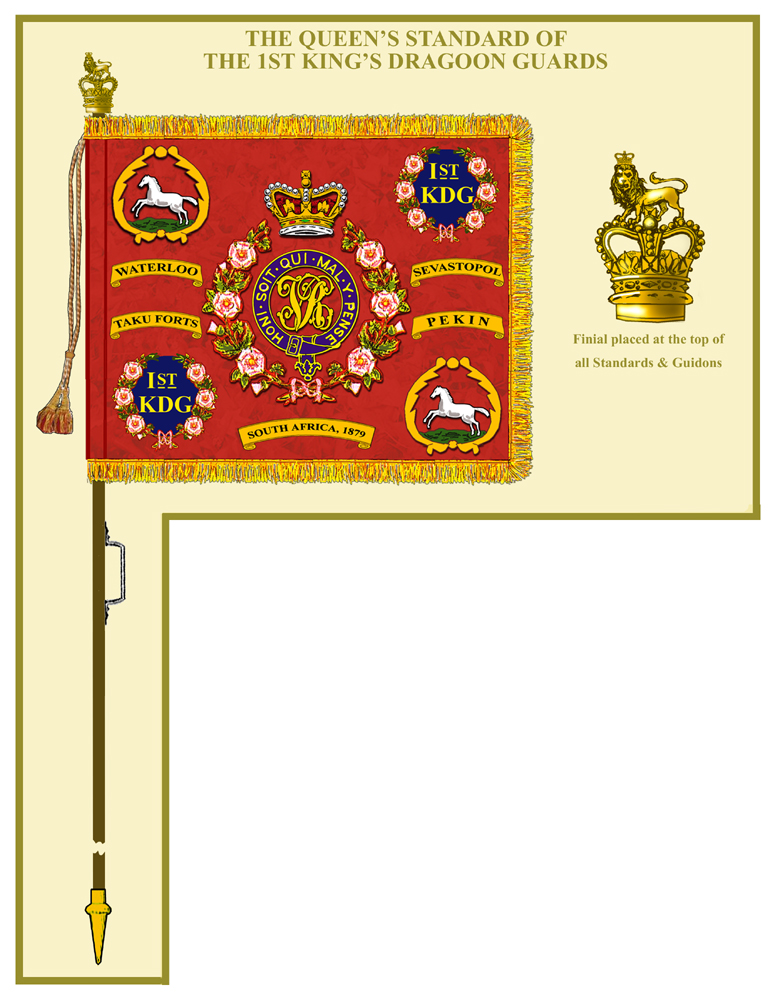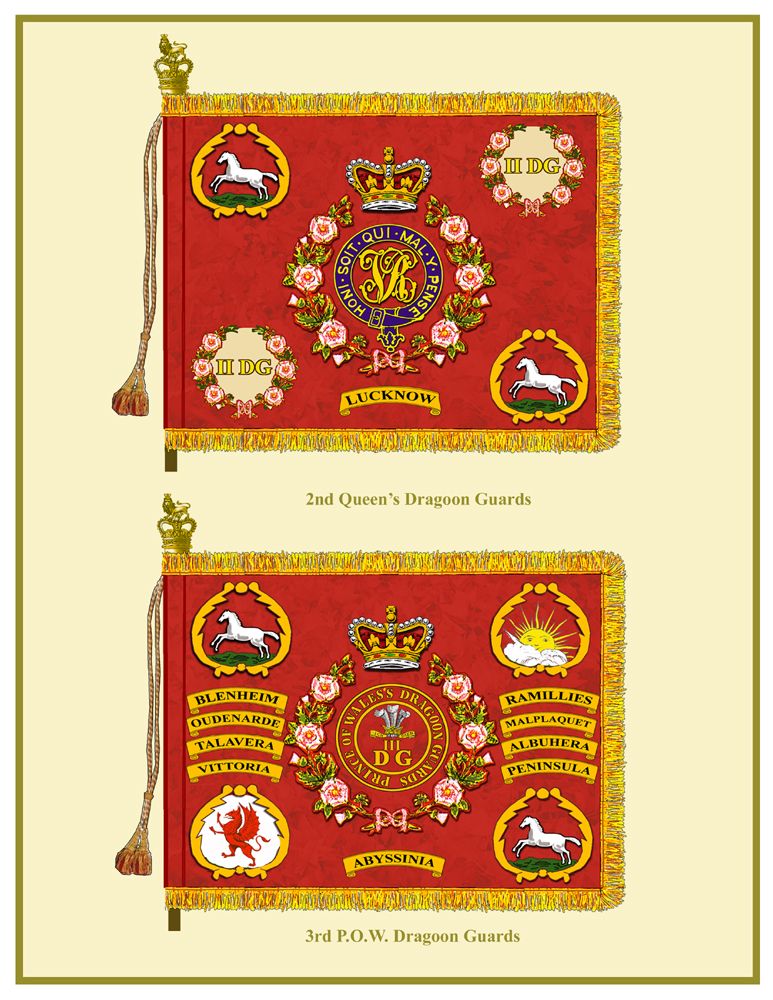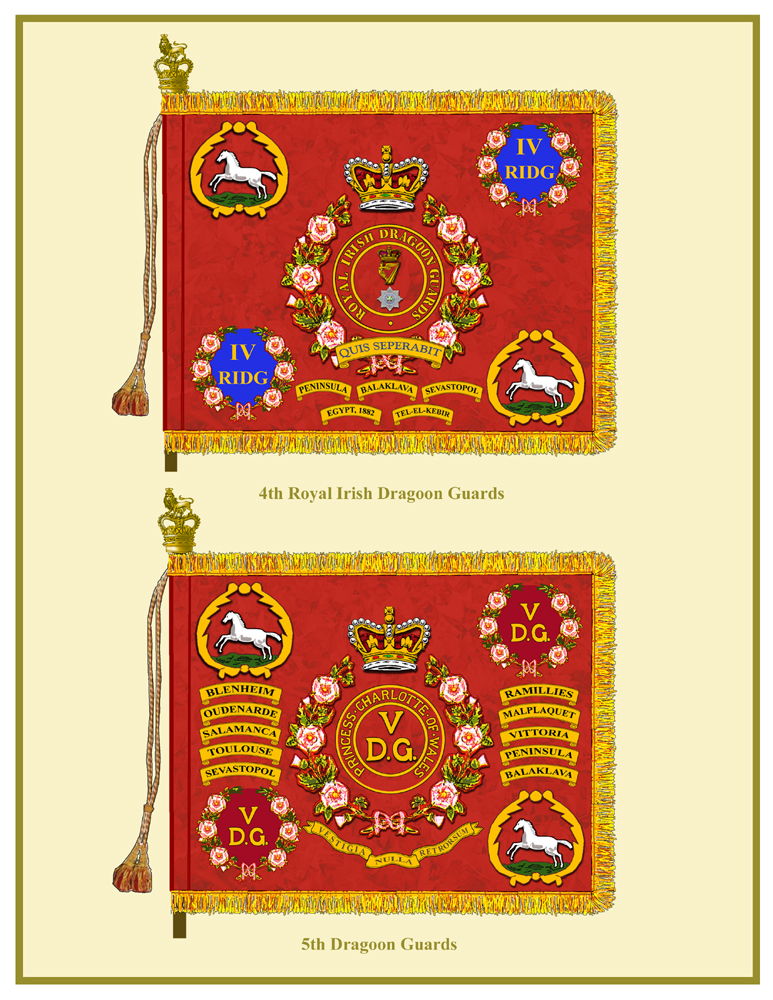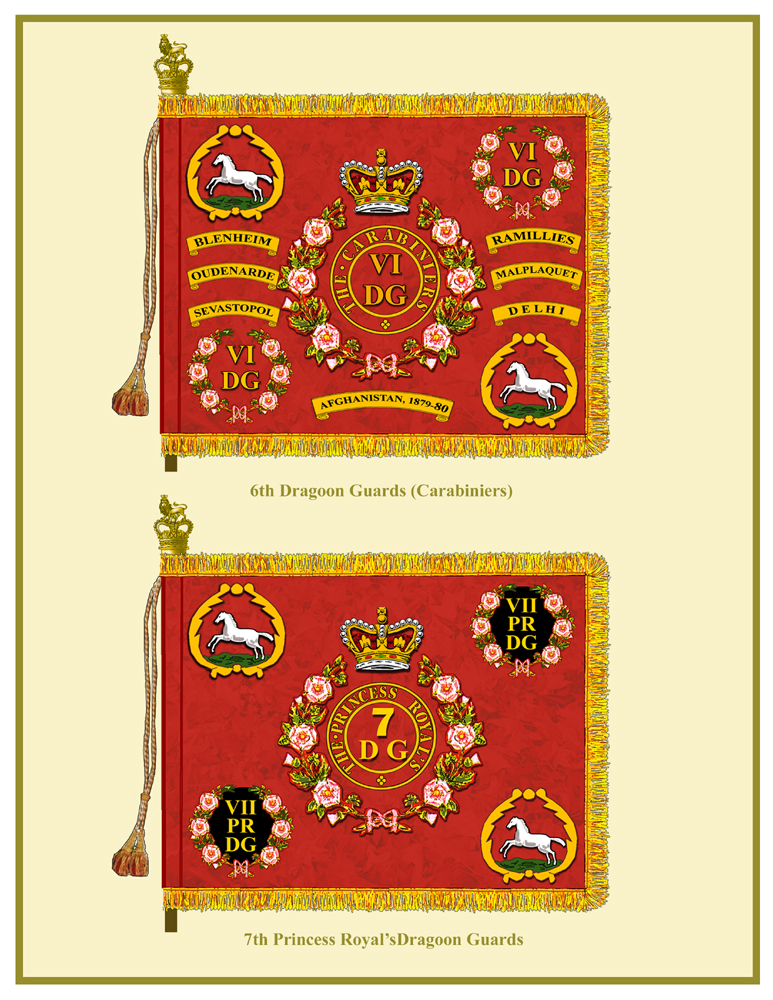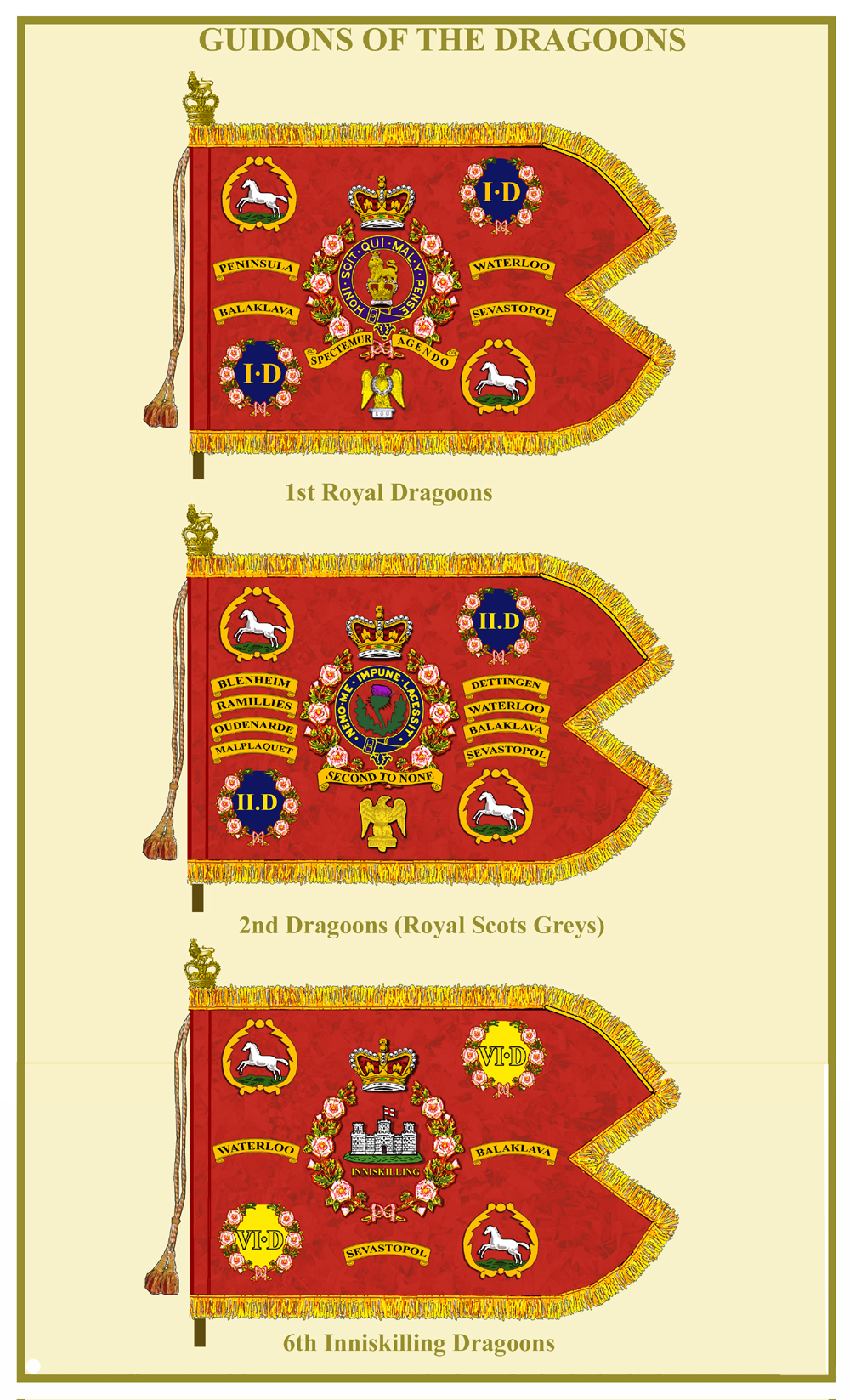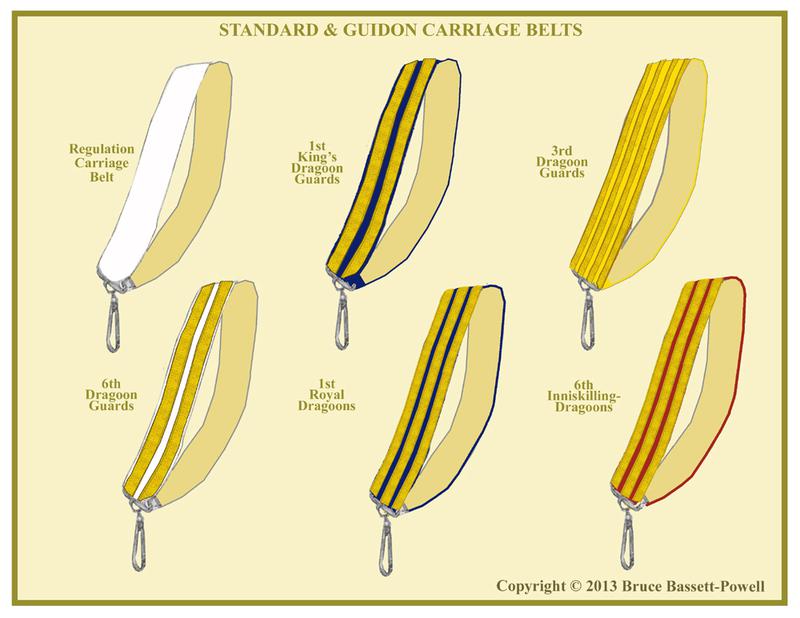HEAVY CAVALRY UNIFORMS, ARMS & EQUIPMENT - DRAGOON GUARDS & DRAGOONS
STANDARDS AND GUIDONS
Unlike infantry colours, the standards and guidons carried by the cavalry appeared to have more of a symbolic function than a rallying point in battle. Since the beginning of the century few standards have ever been taken on campaign and there is no record of them ever been carried in action from that time. The depiction of the Royal Scots Grey’s guidon in Lady Butler’s famous painting “Scotland Forever” (and the movie “Waterloo”) is most certainly erroneous. The number of standards/guidons carried by cavalry regiments varied considerably over the years. By 1834 only the Household Cavalry, Dragoon Guards and Dragoons were permitted to carry them. Dragoon Guards carried standards and Dragoons guidons, although this wasn’t fully established until 1844. At the same time the primary standard or guidon was to be known as the “Royal” (In 1892 it became the “Queen’s).
The size of the flags had changed little since the middle of the 18th Century. The regulations of 1768 stated that the standard should be 2 ft 5 ins in the fly (without fringe) and 2 ft 3 ins on the staff. Guidons were to be 3 ft 5 ins in the fly and 2 ft 3 ins on the staff. The staff or lance was to be 9 ft long (including ferrule). These dimensions did not change in 1858 but the spear head was replaced by the Royal Crest of England, a regulation initially applying to Infantry colours but not taken up by the cavalry until 1868. In 1873 the standards of Dragoon Guards were slightly altered in size to 2 ft 5 ½ ins in the fly and 2 ft 2 ins on the staff. The staff was also reduced to 8 ft 6 ins. Guidon sizes remained the same as in 1768.
The great ceremony and consecrations that marked the presentation of colours to infantry regiments did not happen with cavalry regiments. Perhaps this was because they had not been carried in battle since the middle of the last century. The War Office department authorized to regulate such matters stipulated that standards and guidons should last for about twenty years before being replaced. They were then made up and issued to the regiment, often without fanfare and often without notice in regimental histories and accounts. When new battle honours were awarded they were often stitched to existing flags by the Army Clothing Department. In 1898 the dimensions of standards were again slightly changed to 2 ft 5 ½ ins in the fly and 2 ft 2 ins on the staff.
The standards and guidons here represent those carried toward the end of the century. Most of the battle honours awarded since 1881 are on them and obviously don’t include any from the Boer War. These flags were carried well into the twentieth century when the Victorian crown was changed to the Edwardian crown. These were also frequently depicted in cigarette card series and other publications. The standard of the7th Dragoon Guards shows no battle honours as that bearing the many they were entitled to would not appear until after 1902.
THE CARRIAGE BELT
Standards and guidons have been carried by troop sergeant-majors since the eighteen-twenties. In the eighteen-nineties the duties were taken up by the Squadron Sergeant-Major. Many regiments had an elaborate carriage belt which was worn when carrying the flag which had a clasp that attached to a ring on the staff. The belt seems to have been covered in velvet in the colour of the facings edged by gold lace in Dragoon Guards and with a central stripe of gold lace by Dragoons. There also were differences like the three gold lace stripes on the belt of the 3rd Dragoon Guards and the Crimson ground on the belt of the Inniskillings. Some regiments like the 7th Dragoon Guards and 5th Dragoon Guards wore only the white regulation belt. If there was a laced belt, I have never seen one.
The definitive change to regulations regarding standards, guidons and colours came in 1858. Henceforth the heavy cavalry regiments still carrying standards or guidons were to have only one per regiment. (Regulations for the Household Cavalry differed somewhat). In addition the provision of flags became the responsibility of the War Office and the Inspector-General of Regimental Colours instead of the colonel in what had been known as “The Propriety System. Royal approval was also expected. The arrangement of emblems, badges and battle honours also now became what they would remain to this day. The central motif was the regimental number or badge within a Union wreath. In the upper left and lower right cantons was a smaller regimental number (or device) within the Union wreath on the ground of the regimental facings. In the upper left and lower right cantons was a cartouche within which was the Leaping White Horse of Hanover. Battle honours were displayed either side of the central device and mottoes appeared below. There were naturally variations, one of the most marked being that of the 3rd (Prince of Wales’s) Dragoon Guards..



